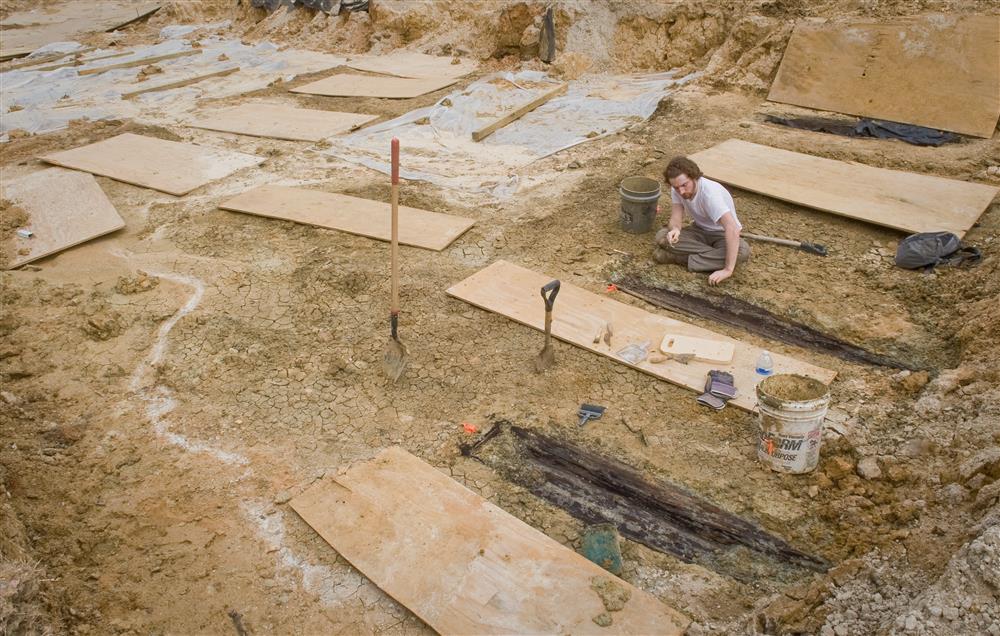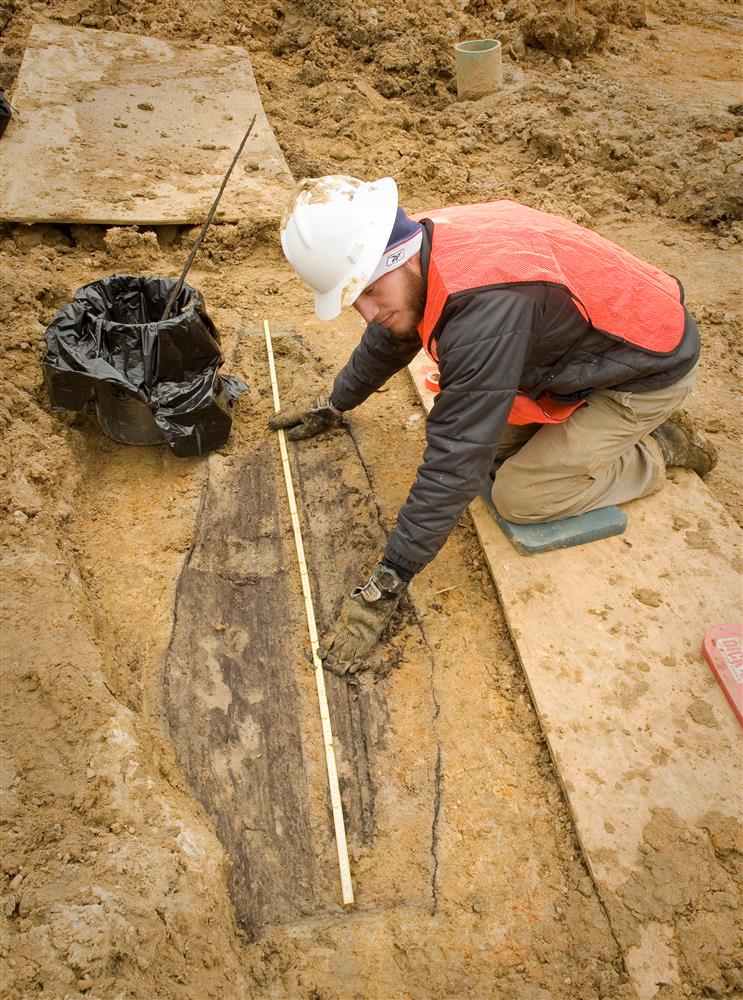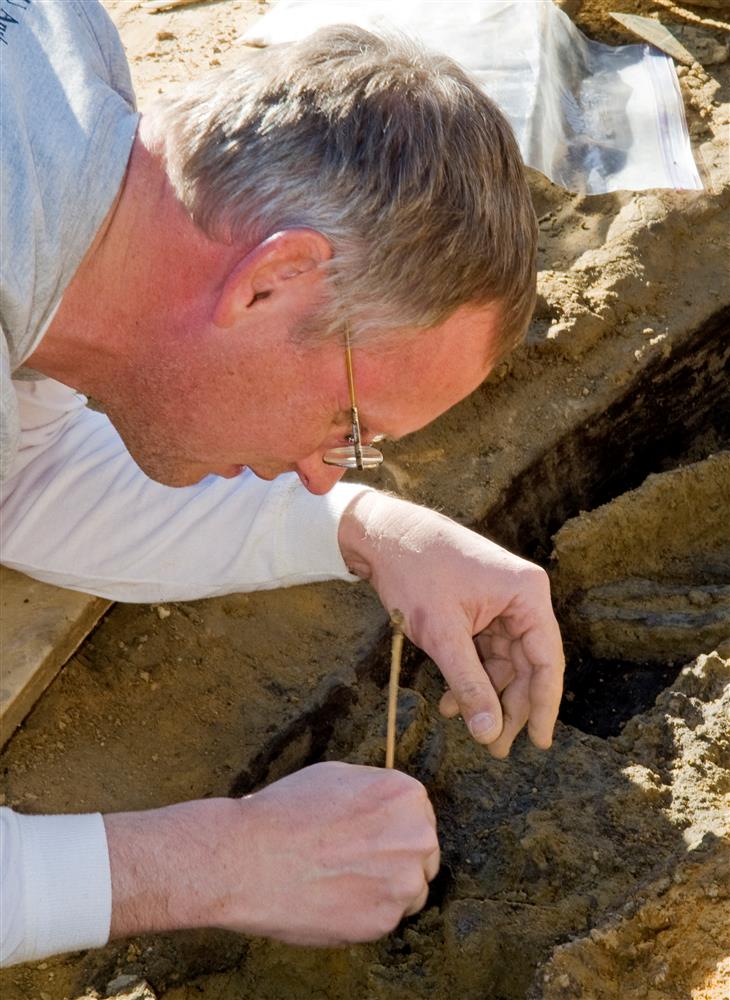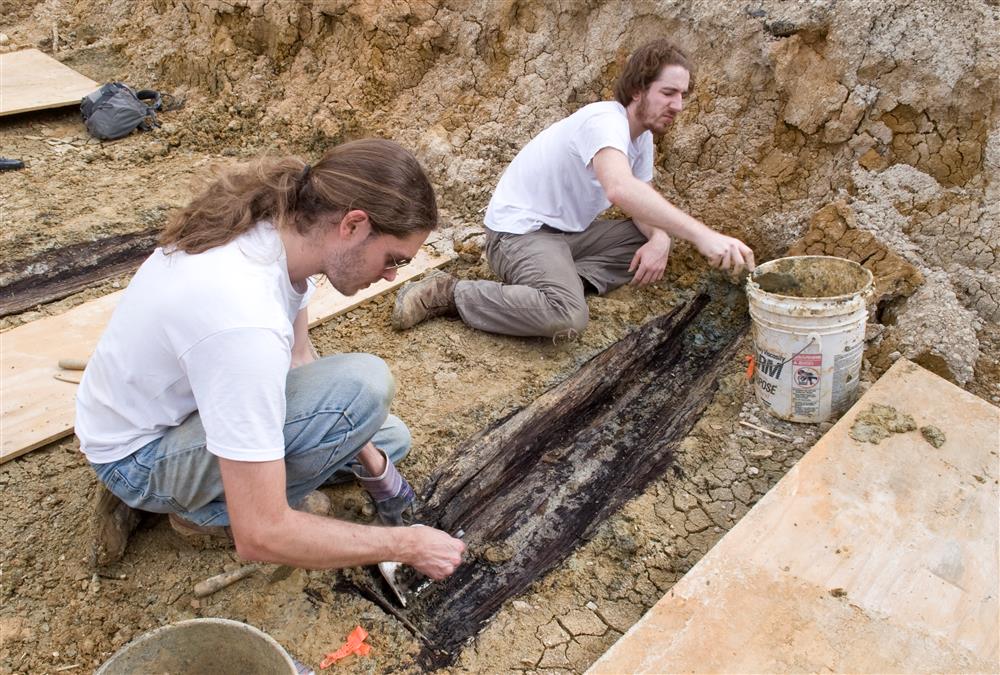66 graves uncovered at UMMC linked to asylum

With the recent discovery of 66 unidentified graves at the former site of a mental institution, Mississippi State University, the University of Mississippi Medical Center and others are working together to lay bare a chapter of the state’s buried past.
As has happened before at the UMMC campus in Jackson, a construction crew scraped away decades-old layers of dirt and desertion to reveal human remains that were unmarked, making it virtually impossible to attach names to them.
Wooden coffins, unearthed from November through early March, probably date from the late 19th to early 20th centuries and may be linked to the vanished Mississippi State Insane Asylum.
As has happened before at the UMMC campus in Jackson, a construction crew scraped away decades-old layers of dirt and desertion to reveal human remains that were unmarked, making it virtually impossible to attach names to them.
Wooden coffins, unearthed from November through early March, probably date from the late 19th to early 20th centuries and may be linked to the vanished Mississippi State Insane Asylum.

A team from the Department of Anthropology at MSU in Starkville is removing and documenting the skeletal remains, adhering to guidelines from the Center for Archaeological Research at the University of Mississippi in Oxford and the Mississippi Department of Archives and History in Jackson.
“Asylums in late 19th century or early 20th century probably weren’t salubrious places to live, so it matters to us to be able to exhume these people in a very respectful and ethical manner that’s very standardized,” said Molly Zuckerman, assistant professor of anthropology/Middle Eastern culture at MSU.
“The goal is to treat them respectfully and analyze them respectfully.”
Also known as the State Insane Hospital, the asylum operated from 1855 to 1935.
It was destroyed to make way for UMMC, which opened in 1955, and was replaced by the Mississippi State Hospital in Whitfield; but during its 80-year history in Jackson, it treated thousands of patients.
Its main building rose four stories alongside north State Street near the current Ronald McDonald House site on the UMMC campus. Many patients who died at the asylum were buried on a site hundreds of yards to the east, where 21st century workers discovered the 66 graves near a stand of pine trees.
The coffins are about six feet long but alarmingly narrow, as if each held a pair of stilts instead of a human skeleton.
“The weight of the soil compressed them,” said Nicholas Herrmann, associate professor of anthropology/Middle Eastern culture at MSU.
Construction equipment exposed the coffins as crews dug out subsoil to see if it was fit to support a new road designed to provide better access to the north and east portions of the campus.
UMMC plans to schedule the opening of the new road within the next couple of months, said Nicole Reese, senior project manager in UMMC’s Office of Planning and Design.
“Asylums in late 19th century or early 20th century probably weren’t salubrious places to live, so it matters to us to be able to exhume these people in a very respectful and ethical manner that’s very standardized,” said Molly Zuckerman, assistant professor of anthropology/Middle Eastern culture at MSU.
“The goal is to treat them respectfully and analyze them respectfully.”
Also known as the State Insane Hospital, the asylum operated from 1855 to 1935.
It was destroyed to make way for UMMC, which opened in 1955, and was replaced by the Mississippi State Hospital in Whitfield; but during its 80-year history in Jackson, it treated thousands of patients.
Its main building rose four stories alongside north State Street near the current Ronald McDonald House site on the UMMC campus. Many patients who died at the asylum were buried on a site hundreds of yards to the east, where 21st century workers discovered the 66 graves near a stand of pine trees.
The coffins are about six feet long but alarmingly narrow, as if each held a pair of stilts instead of a human skeleton.
“The weight of the soil compressed them,” said Nicholas Herrmann, associate professor of anthropology/Middle Eastern culture at MSU.
Construction equipment exposed the coffins as crews dug out subsoil to see if it was fit to support a new road designed to provide better access to the north and east portions of the campus.
UMMC plans to schedule the opening of the new road within the next couple of months, said Nicole Reese, senior project manager in UMMC’s Office of Planning and Design.

The roadway cuts through a wooded area and intersects an existing road running parallel to Lakeland Drive. The remains were found just off the north side of that existing road.
“A lot of clay and junk was in the soil,” said Ron Horne, director of construction projects at UMMC, “and has to be replaced with something more solid.”
Most of the graves were at least four or five feet deep.
“We might have built the roadbed on top of them if the subsoil had been solid,” Horne said.
Although Herrmann believes the remains are tied to the asylum, a Department of Archives report declared it unlikely to be pinpointed whether “the burials located on the ridge to the east of the project area include inmates from the asylum or paupers or some other group of people. …”
Investigators will try.
MSU will have the remains for two years for university experts to study them. Students are a helping in a variety of ways, including identifying the bones’ characteristics.
“Bone chemistry” can help determine residential history, Herrmann said. By examining tooth enamel, for instance, archaeologists can learn much about a deceased person’s diet – in this case, if it was typical for Mississippi.
Traces of certain elements – say, lead and carbon – reveal details about a person’s environment and approximate age.
MSU students aren’t the only ones volunteering for the data collection: University of Alabama students and Louisiana State University students have offered their help.
One MSU undergraduate, senior anthropology major Kenneth “Kent” Aasand II of Brandon, said the experience he’s gaining by working at the site and in MSU’s lab is invaluable.
“The professors are talking about it, but you never really fully understand until you get out in the field,” he said. “When you’re actually part of every process in an excavation, you’re learning better ways to do things.”
“A lot of clay and junk was in the soil,” said Ron Horne, director of construction projects at UMMC, “and has to be replaced with something more solid.”
Most of the graves were at least four or five feet deep.
“We might have built the roadbed on top of them if the subsoil had been solid,” Horne said.
Although Herrmann believes the remains are tied to the asylum, a Department of Archives report declared it unlikely to be pinpointed whether “the burials located on the ridge to the east of the project area include inmates from the asylum or paupers or some other group of people. …”
Investigators will try.
MSU will have the remains for two years for university experts to study them. Students are a helping in a variety of ways, including identifying the bones’ characteristics.
“Bone chemistry” can help determine residential history, Herrmann said. By examining tooth enamel, for instance, archaeologists can learn much about a deceased person’s diet – in this case, if it was typical for Mississippi.
Traces of certain elements – say, lead and carbon – reveal details about a person’s environment and approximate age.
MSU students aren’t the only ones volunteering for the data collection: University of Alabama students and Louisiana State University students have offered their help.
One MSU undergraduate, senior anthropology major Kenneth “Kent” Aasand II of Brandon, said the experience he’s gaining by working at the site and in MSU’s lab is invaluable.
“The professors are talking about it, but you never really fully understand until you get out in the field,” he said. “When you’re actually part of every process in an excavation, you’re learning better ways to do things.”

In addition to garnering volunteers from all over the South, MSU and Ole Miss are collaborating with University of Southern Mississippi to determine the coffin wood’s age and makeup, which could also reveal clues about the graves’ occupants.
“We want to give these people a voice,” Zuckerman said.
Once the investigation is complete, the remains will be reburied at UMMC, in a cemetery set aside for anatomical donors and for other human remains discovered on campus in the past.
“It’s the right thing to do,” said Jim Woodrick, director of the Historic Preservation Division of the Department of Archives.
“Things expand, but memory doesn’t expand with them.”
Archaeologists help recover it, he said.
“This doesn’t stop progress, but we are also able to accommodate those who died.
“We learn things about our past. We honor the dead.”
“We want to give these people a voice,” Zuckerman said.
Once the investigation is complete, the remains will be reburied at UMMC, in a cemetery set aside for anatomical donors and for other human remains discovered on campus in the past.
“It’s the right thing to do,” said Jim Woodrick, director of the Historic Preservation Division of the Department of Archives.
“Things expand, but memory doesn’t expand with them.”
Archaeologists help recover it, he said.
“This doesn’t stop progress, but we are also able to accommodate those who died.
“We learn things about our past. We honor the dead.”


